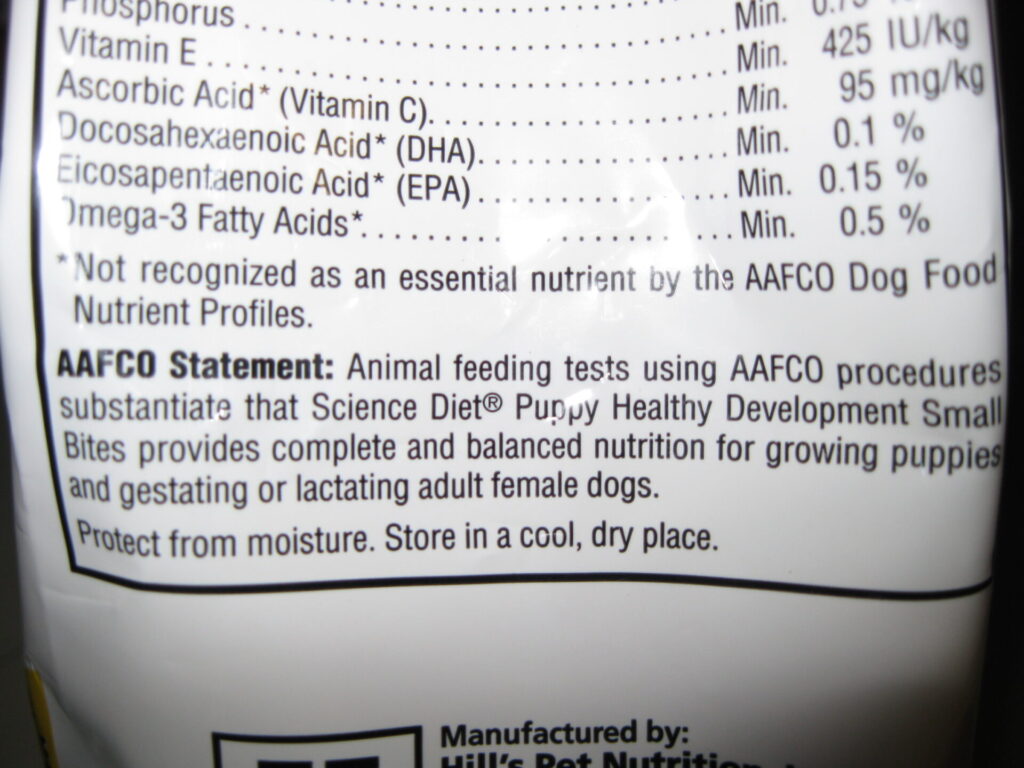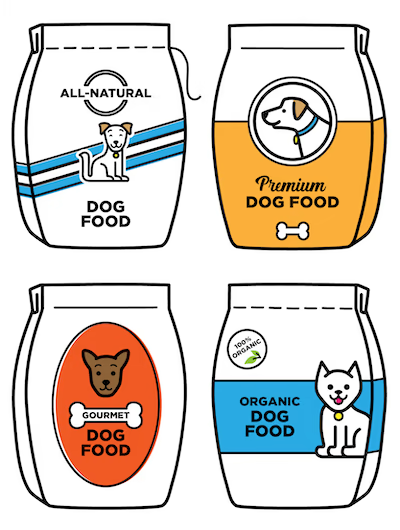Choosing the right food for your puppy can be overwhelming with so many options available. Understanding puppy food labels is crucial to ensure your furry friend gets the best nutrition for healthy growth and development. This guide will help you decode these labels, so you can confidently choose the best dog foods for your puppy.
Importance of Understanding Puppy Food Labels
Puppy food labels provide essential information about the nutritional content and ingredients in the food. Knowing how to read these labels ensures that your puppy receives a balanced diet tailored to their specific needs.
Key Components of Puppy Food Labels
Here are the main components you should look for on puppy food labels:
- Guaranteed Analysis
- Ingredients List
- AAFCO Statement
- Feeding Guidelines
Guaranteed Analysis
The guaranteed analysis section lists the minimum and maximum percentages of key nutrients in the food, such as:
- Crude Protein: Essential for muscle growth and repair.
- Crude Fat: Provides energy and supports skin and coat health.
- Crude Fiber: Aids digestion and maintains a healthy weight.
- Moisture: Indicates the water content in the food.
Ensuring the food meets the recommended nutritional levels for puppies is vital for their overall health. High-quality puppy food will list specific sources of protein and fat, such as chicken or fish oil, rather than generic terms like “meat by-products.”
Ingredients List
Ingredients are listed in descending order by weight. Look for high-quality sources of protein and avoid foods with excessive fillers or artificial additives. Key points to consider:
- Whole Protein Sources: Chicken, beef, fish, or lamb should be the first ingredient.
- Grains and Vegetables: Brown rice, barley, sweet potatoes, and carrots provide essential vitamins and minerals.
- Additives and Preservatives: Avoid artificial colors, flavors, and preservatives like BHA, BHT, and ethoxyquin.
High-quality ingredients contribute to the best dog foods, supporting your puppy’s growth and health.
AAFCO Statement
The Association of American Feed Control Officials (AAFCO) sets nutritional standards for pet foods. The AAFCO statement on the label confirms that the food meets these standards. Look for phrases such as:
- “Complete and Balanced”: Indicates the food provides all necessary nutrients for a specific life stage.
- “All Life Stages”: Suitable for puppies, adults, and seniors, but may have higher calorie content.
A food that meets AAFCO standards ensures your puppy receives adequate nutrition.

Feeding Guidelines
Feeding guidelines provide recommended serving sizes based on your puppy’s weight and age. These are general recommendations and may need adjustment based on your puppy’s activity level and metabolism. Key tips:
- Monitor Weight: Regularly check your puppy’s weight to ensure they are growing at a healthy rate.
- Adjust Portions: Increase or decrease portions as needed to maintain an ideal body condition.
Tips for Choosing the Best Dog Foods for Puppies
Understanding puppy food labels helps you make informed decisions. Here are additional tips to ensure you choose the best dog foods for your puppy:
- Consult Your Veterinarian: Your vet can recommend foods tailored to your puppy’s breed, size, and health needs.
- Research Brands: Look for brands with a good reputation for quality and safety.
- Read Reviews: Check online reviews from other pet owners for real-world insights.
- Consider Special Needs: If your puppy has specific health concerns, such as allergies or a sensitive stomach, choose a food formulated to address these issues.

Common Misleading Claims on Puppy Food Labels
Be cautious of marketing claims that may not accurately reflect the food’s quality. Some common misleading claims include:
- “Natural” or “Organic”: These terms are not strictly regulated and do not guarantee superior quality.
- “Premium” or “Gourmet”: These are marketing terms with no specific nutritional standards.
- “Grain-Free”: While beneficial for some dogs, grain-free diets are not necessary for all puppies and may lack essential nutrients.

Conclusion
Decoding puppy food labels is essential to choosing the best dog foods for your furry friend. By understanding the guaranteed analysis, ingredients list, AAFCO statement, and feeding guidelines, you can ensure your puppy receives the nutrition they need for healthy growth. Always consult your veterinarian for personalized advice and regularly monitor your puppy’s health and weight to make any necessary adjustments. With the right knowledge and attention, you can provide your puppy with a balanced diet that supports their development and well-being.
By following this guide, you’ll be better equipped to navigate the pet food aisle and make informed choices that contribute to your puppy’s overall health and happiness.





















